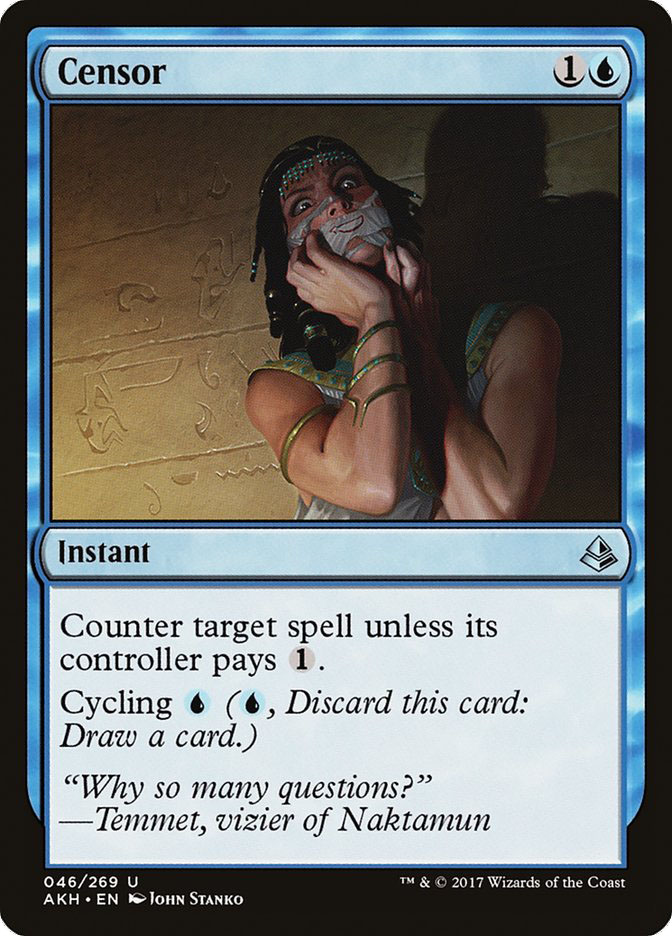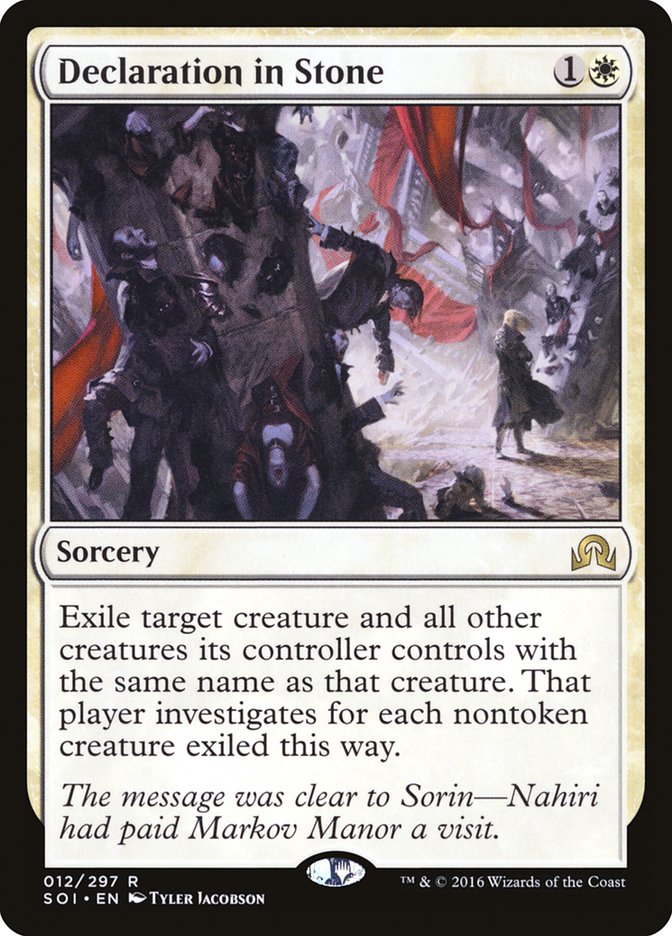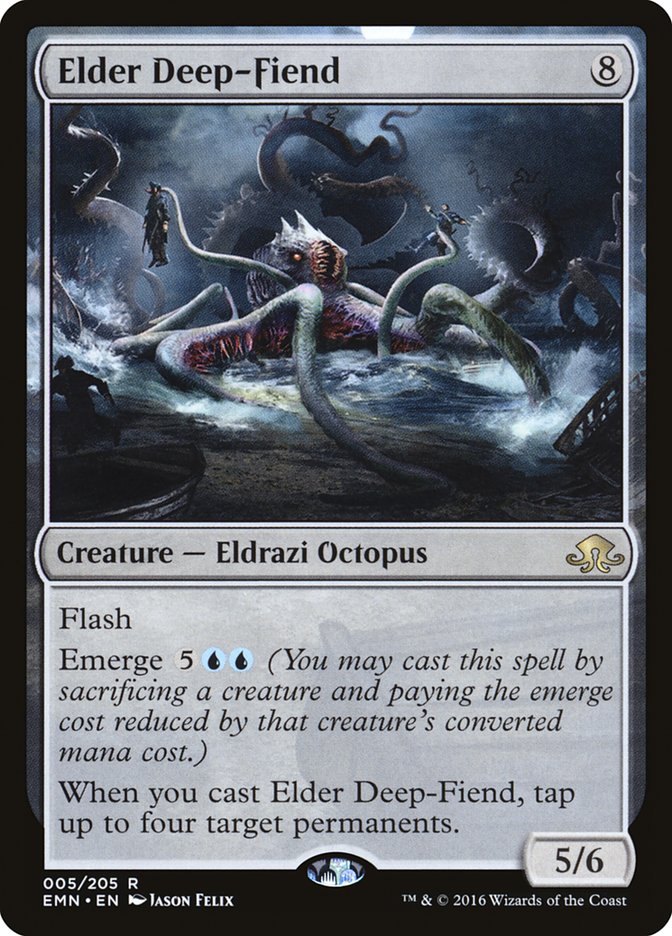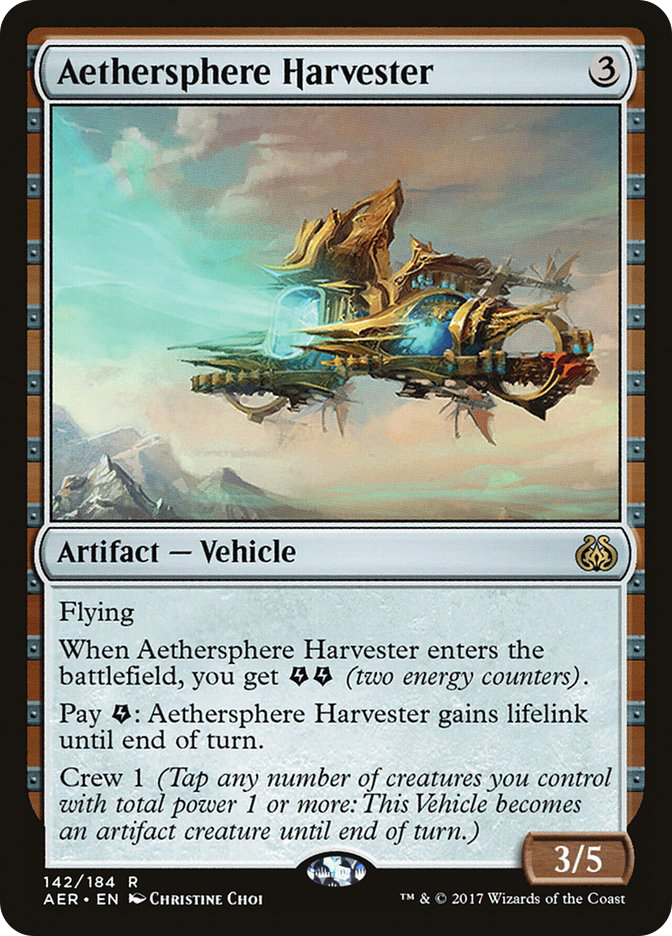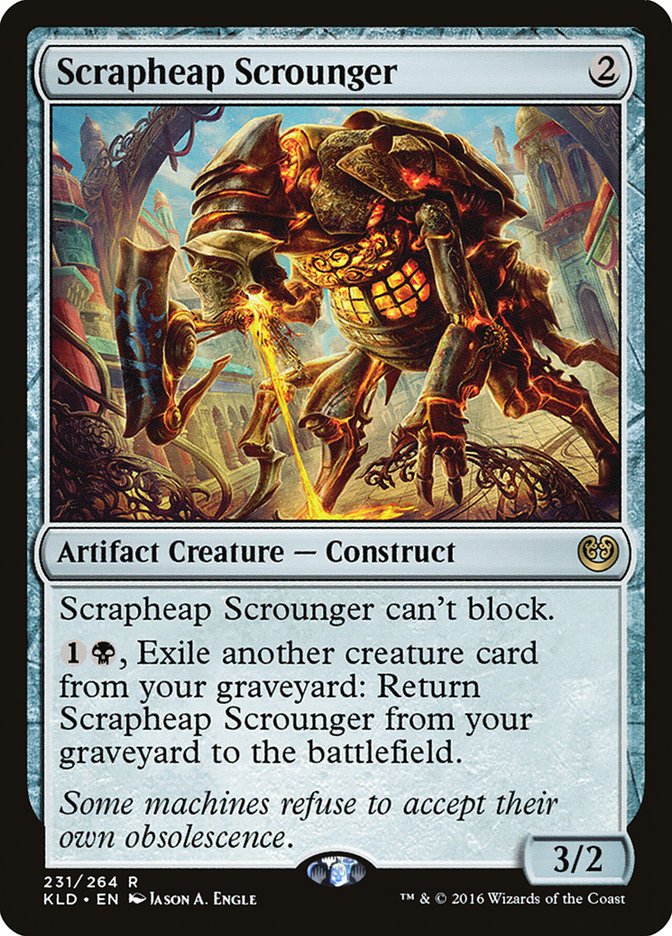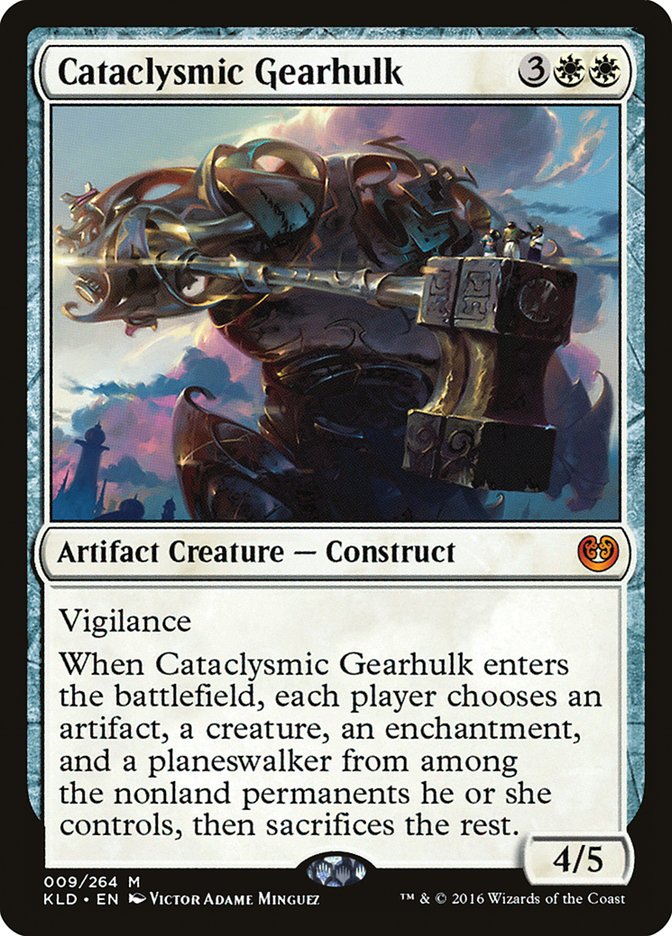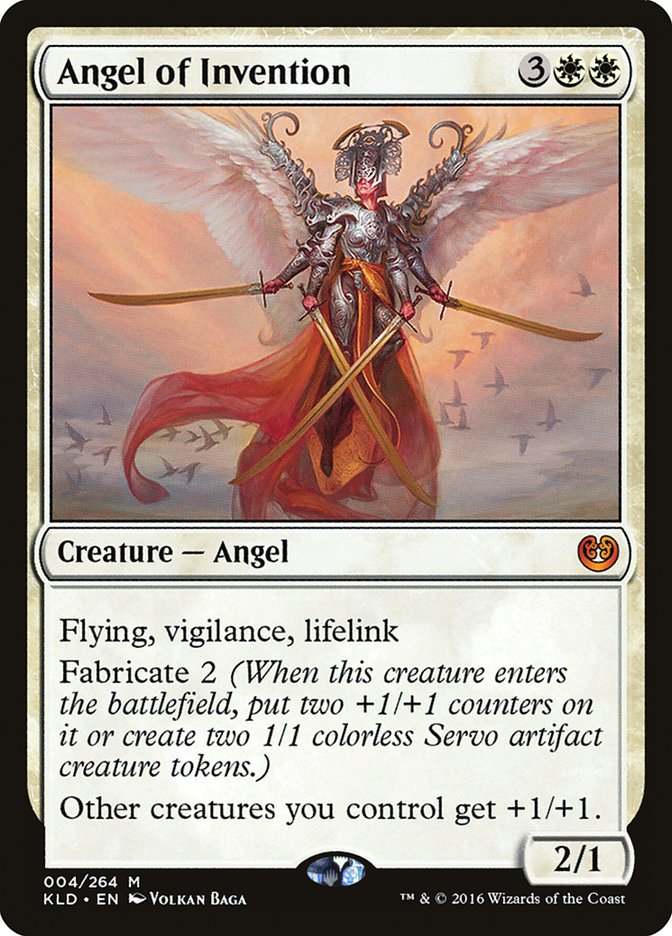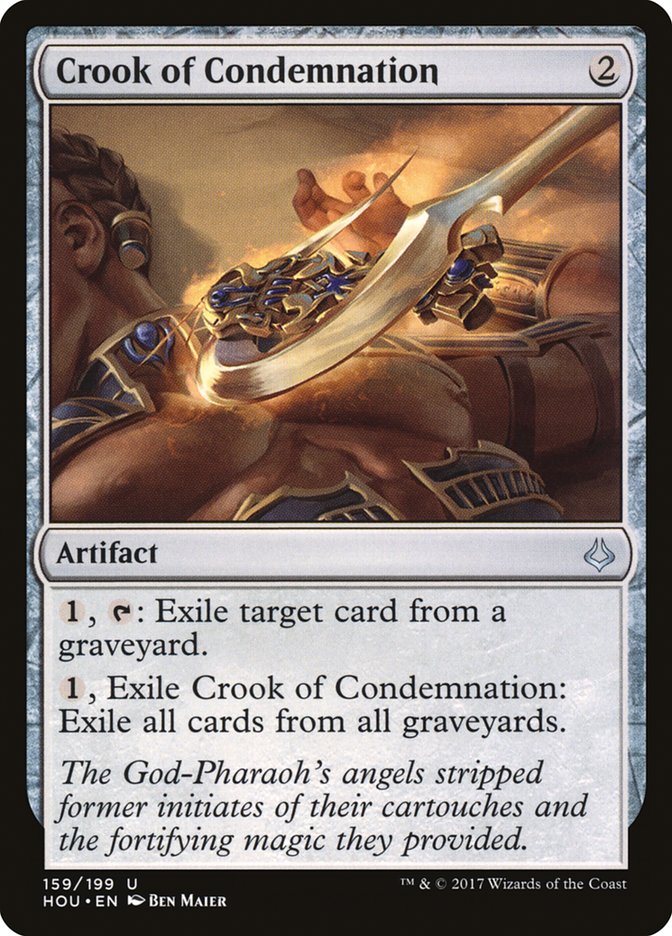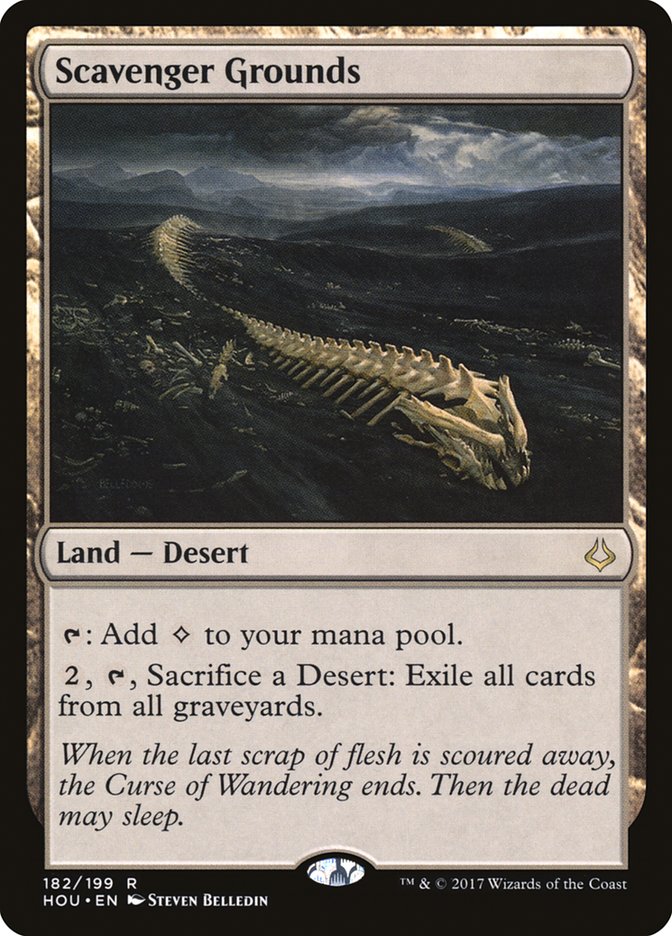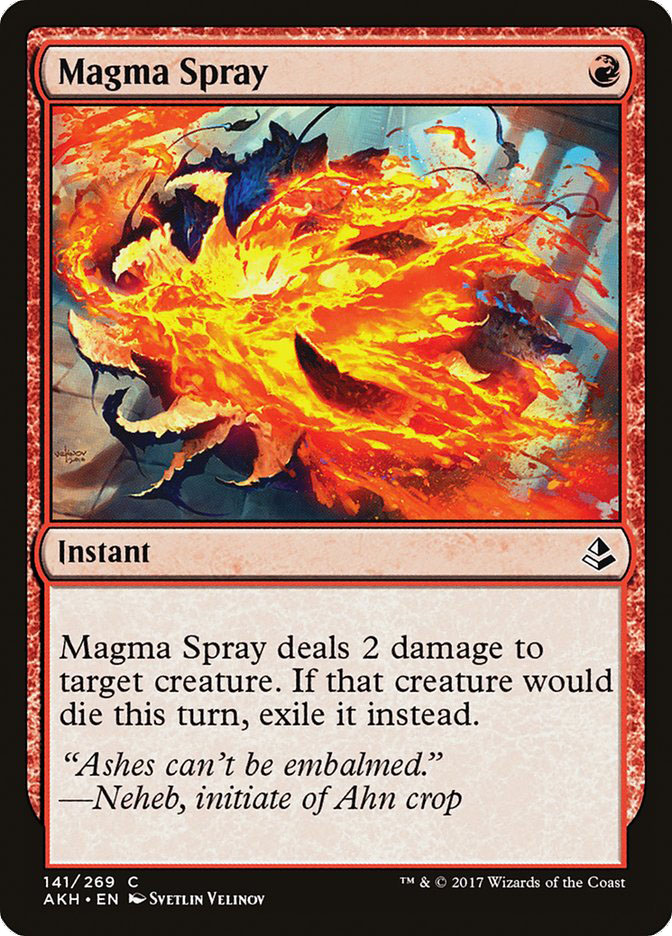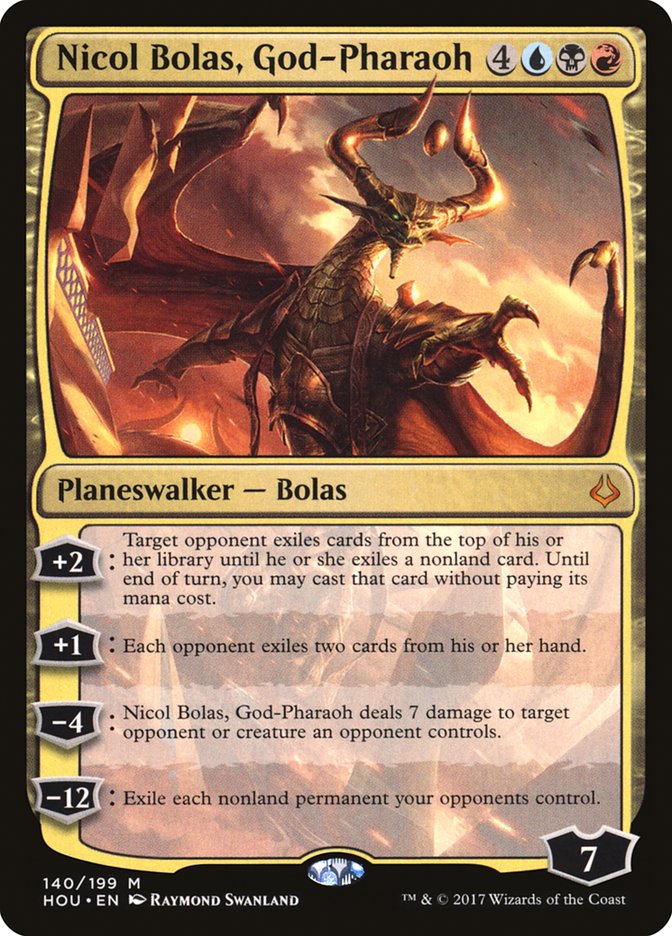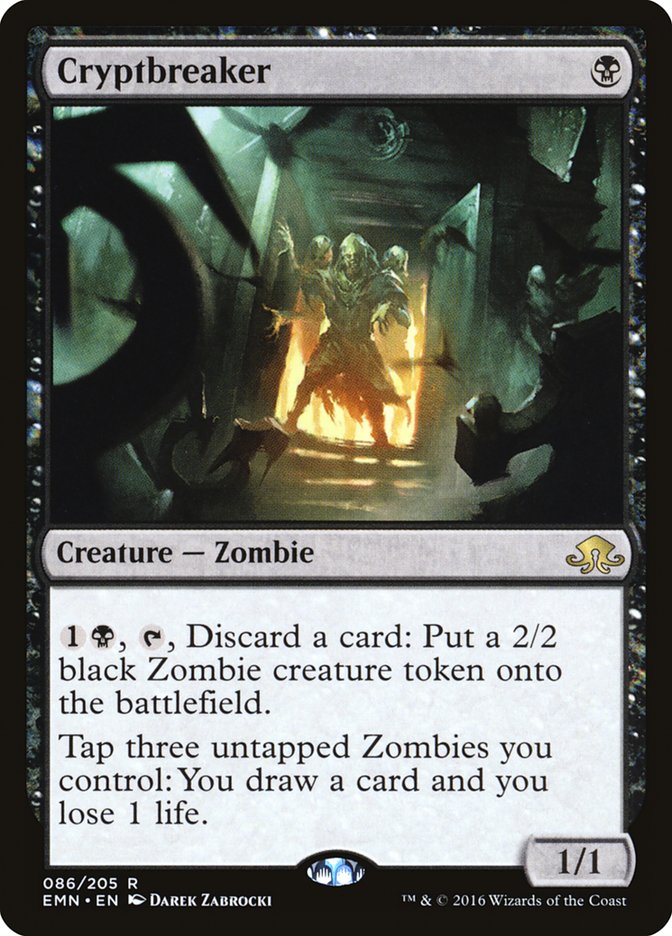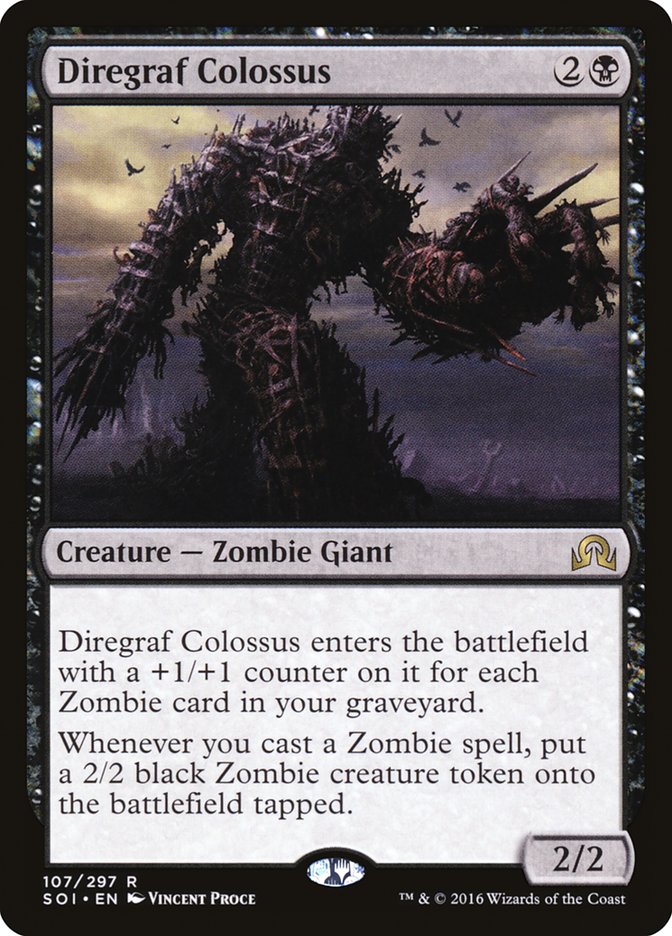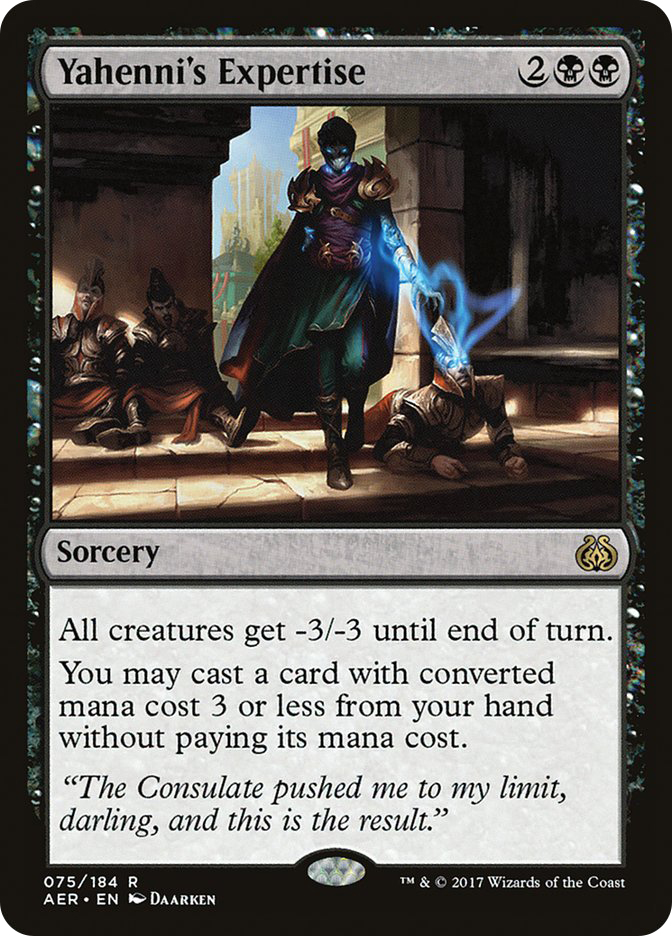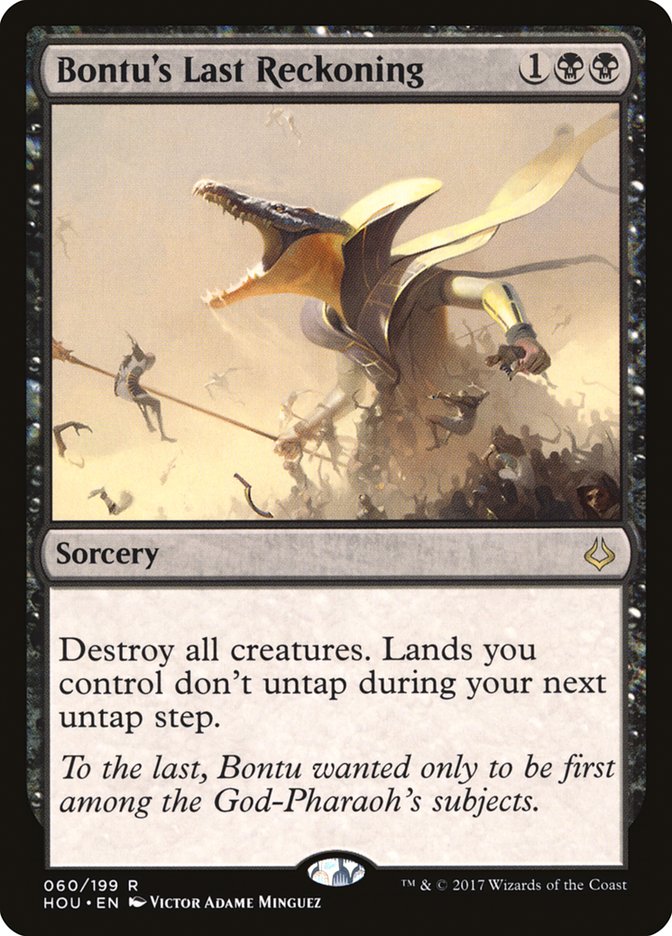I almost forgot what it’s like for Standard to be wide-open.
We’ve been playing under an oppressive, monarchical regime where Collected Company gave way to Gideon, Ally of Zendikar, which gave way to Emrakul, the Promised End, which gave way to Aetherworks Marvel, which gave way to Felidar Guardian, which gave way to Aetherworks Marvel again, like Napoleon returning from Elba.
After years of toil and strife culminating in several popular uprisings against the most draconian of these tyrants, we the workers have finally seized the means of production and are now prepared to live in a Marxist utopia, as had been the case for many years in Standard until the dark times, the dark ages.
Not those Dark Ages.
With #PTHOU coming up this weekend, the murky picture of the format will crystallize as it shrinks around a top tier of decks and those decks that are best able to compete with that tier. Unfortunately, I am not in Japan preparing for this Pro Tour, so I wanted to give you all some insight into what the players who are preparing are thinking about as they work through testing the format and their and their team’s brews.
Personally, I think the most important and vastly underrated aspect of Magic is asking the right questions. Doing so allows you to frame the problem in any way you wish, giving you complete control of how you frame the issue and thus an ability to crop out things you think are irrelevant and concentrate on the most important parts.
Even with two weeks of testing in a secluded house on a great team, you’re not going to be able to fully entertain every idea and test every brew. Executive decisions have to be made that are going to create the best use of resources for the team. With that said, here are the primary questions I think the players this weekend are facing (in no particular order), and my first attempts at answering them.
How Popular Will Mono-Red Be?
Creatures (24)
- 4 Falkenrath Gorger
- 4 Bomat Courier
- 4 Scrapheap Scrounger
- 1 Kari Zev, Skyship Raider
- 1 Hazoret the Fervent
- 4 Ahn-Crop Crasher
- 2 Soul-Scar Mage
- 4 Earthshaker Khenra
Planeswalkers (2)
Lands (23)
Spells (11)

After a fine if unsurprising showing in Week 1, I certainly expected to see the Week 2 decline in aggressive decks as players adapt to the deck and further refine their brews. However, the deck vastly improved its results in the second week of the format, taking first and second in #SCGATL, as well as first in the Standard Classic on the weekend.
It was also far and away the most-played deck on Day 2 of the Team Open, so it’s clear that most players have caught on to the deck’s power. Given this sheer dominance, it has to be considered the Level 0 deck for the Pro Tour, and that puts it in an interesting spot in the metagame.
Aggressive decks, especially low-to-the-ground, linear ones like Mono-Red Aggro tend to be quite exploitable as top decks, which is why you typically see them decline quickly from their perch following the first week of the format. The fact that this one dominated in Week 2 gives a much stronger signal that it is a long-term contender in the format and thus a solid choice on any given weekend.
So do a significant number of players flock to the deck, making it the most-played deck in the field after years of such decks lying dormant? Or did players simply not respect the deck after Jonathan Job’s Top 8 in Week 1, leading to a metagame that was weak to linear aggro in Atlanta, a metagame that can easily correct itself this weekend in Japan?
For the most part, I am leaning toward the latter, but there is one aspect of these decks that I see as a great sign that it is a top contender: the variety in the lists. The lists that Tom Ross and Jim Davis played differ quite significantly, with Tom incorporating a light black splash for Scrapheap Scrounger.
Moreover, all the lists from this week differ starkly from Job’s Week 1 list, which went bigger with various Eldrazi and Glorybringer, allowing the deck to sideboard into a midrange deck against dedicated aggro hate.
That we’re seeing many different lists do well is indicative of a very strong shell and makes preparing for the deck more difficult, especially if someone continues to innovate the deck. Unlike most Mono-Red Aggro decks, this one has plenty of deckbuliding options, and finding the right balance of speed and resilience is going to be critical.
This variety will keep the deck’s numbers up, and it has a good chance of leading the field in metagame share, at least on day one. But linear decks are always worse with a target on their back, and the players this weekend know that. That fear will keep it from being a huge portion of the field like it was last weekend, and I think most players will be successful in hating the deck out, if only for a week.
Even for a deck that goes on to compete well in the metagame long-term, peaking the week before the Pro Tour gives the deck too much visibility to perform well at the big dance. Some decks are good enough that they rise to the challenge, such as Bant Company at Pro Tour Shadows over Innistrad, but I don’t think this Mono-Red Aggro deck is on that level.
It’s a good deck and I won’t be surprised to see someone do well with it, especially if they have a sideboard that lets them elegantly sidestep hate, but I don’t think we’re going to see a third Pro Tour crown for Mono-Red Aggro. If I were on a team, I’d be designating our best aggro player to figuring out the deck and finding a good list to inform the gauntlet, and I’m going to respect the deck when brewing and tuning other decks, but it would only be a last-resort option to play.
The one way I see the deck overperforming for a second straight week is if enough teams go a step too far in their testing process and decide that they should ignore the deck as the rest of the metagame will either hate it out directly or the threat of that hate will suppress its numbers to the point of irrelevance. With only a few days left in the testing process, I doubt teams get that far, but it’s something to look out for.
Verdict: The deck will be among the most played decks, but it won’t do well in a metagame that is gunning for it. Respect it but don’t go overboard.
Is God-Pharaoh’s Gift the Real Deal?
Creatures (22)
- 4 Thraben Inspector
- 3 Mausoleum Wanderer
- 3 Cataclysmic Gearhulk
- 4 Angel of Invention
- 4 Minister of Inquiries
- 4 Champion of Wits
Lands (23)
Spells (15)

I was in Toronto for a Limited Grand Prix last weekend, and this deck was still the talk of the tournament. It seemingly came out of nowhere to win the Magic Online PTQ, although players who are tuned in closely to the online metagame were aware of the deck beforehand, even if they hadn’t seen a specific list.
My first reaction to the deck was a jaw-drop. It’s powerful, proactive, and highly synergistic, which is everything I want my decks to be in Magic. The key is really that God-Pharaoh’s Gift triggers on your combat step, allowing you to get a use out of it immediately after casting it; otherwise the lost tempo from playing a seven mana spell or setting it up with Gate to the Afterlife would be too much to overcome.
Instead, you get to return a great toolbox of creatures. Cataclysmic Gearhulk catches you up from lopsided battlefields. Angel of Invention grows your presence by at least eight power across three bodies. Mausoleum Wanderer becomes a sizable flying threat with a near-Counterspell attached, basically what Voidmage Prodigy would be if it were printed today.
The list goes on, but the point is that, once the engine is going, it’s going to be almost impossible to contain. As a deck with lots of moving pieces and a fair amount of set up, you would be right to be worried about playing against red decks, but it also has a low curve of creatures and plenty of built-in lifegain and card advantage going long. Cards like Fumigate or even Sacred Cat are options in the sideboard, should you need to shore up that matchup.
The real boon of this deck is that it should be great against the decks that are built to beat Mono-Red. Midrange decks are the natural prey for combo or engine decks because they give you the time to set up but are rarely doing anything nearly as powerful. Had the deck not been revealed to the world so early, it could’ve taken the Pro Tour by storm.
Instead it must now face down the inevitable rise in hate. Abrade is going to be one of the most-played cards from the new set, and having your seven mana artifact that turns on your entire deck die to a two-mana removal spell is not a good look. With Refurbish and Gate to the Afterlife, you have some redundancy on the linchpin card, but losing a copy before your combat step is a huge tempo swing.
Moreover, Standard now contains several viable graveyard hate options, most notably Crook of Condemnation and Scavenger Grounds. The latter is especially worrisome because lands have such a low opportunity cost.
The question is, how many of these cards can you reasonably put into sideboards? Abrade is a perfectly fine maindeck card, but not all decks are going to have it, and it’s not as though you can put more than a couple of copies of graveyard hate in your maindeck unless your manabase is good enough to play a bunch of colorless lands.
With so many ways to stock the graveyard and find a replacement copy of God-Pharaoh’s Gift, the deck should be resilient to hate, and that’s assuming that the ideal list has no transitional sideboard plan. Gideon, Ally of Zendikar paired with some removal lets the deck do a formidable W/U Midrange impression, but one with an unbeatable end-game should your opponent not have interaction for the engine. That’s a good place to be.
The other dynamic at play here is how aware the major teams were of this deck before the MTGO PTQ. The deck wasn’t entirely unknown, but it may not have jumped out as an immediate contender. If teams are scrambling to adjust their gauntlets and learn how this deck fits into the metagame, you can continue to refine the deck and stay ahead of the metagame.
Verdict: Yes, this deck is real, and I’m not sure the hate is enough to keep it down.
What Is the Right Control Deck?
Creatures (2)
Planeswalkers (5)
Lands (27)
Spells (26)

Four-Color Control bucked the trend of Week 1 aggro dominance to take down the release weekend Open in Cincinnati. U/R Control is currently the most popular deck in Standard according to MTGGoldfish.com, although some of their data likely comes from before Hour of Devastation.
We’ve already seen Torrential Gearhulk take down one Pro Tour this season, and Nicol Bolas, God-Pharaoh is another powerful option for late-game decks that seems easy to fit into the U/R shell. The format is very open, which tends to be bad for control, but Torrential Gearhulk is powerful enough that there will be control of some sort at the Pro Tour.
The question is what sort that may be.
The way I see the metagame, red seems indispensable. Along with Fatal Push, Magma Spray is one of the premier one-mana removal spells, a key for beating aggressive decks. Harnessed Lightning is the best two-mana removal spell option for any deck that generates significant energy and is not-so-secretly the reason most Torrential Gearhulk decks have had red. Last, Abrade gives you a maindeckable answer to God-Pharaoh’s Gift.
From there, the question becomes whether or not to splash black. And while Nicol Bolas, God-Pharaoh is certainly powerful, I think the answer is no. One of the main strengths of Torrential Gearhulk is that it’s a win condition with flash. You aren’t forced to take down the shields in order to get it onto the battlefield, instead biding your time until you have a guaranteed window or it flashes back the interaction you need anyway.
Nicol Bolas brings plenty of built-in interaction itself, but you need to cast it on a relatively clear battlefield and dodge direct answers to it. Most importantly, it matches up horribly against Negate, which is the most common sideboard card against control.
Perhaps a non-Gearhulk-centered control deck is best, especially as Abrade rises in prominence, but opponents having removal for the 5/6 is rarely an issue and the flexibility of it as a win condition is too great to ignore. U/R Control is always going to struggle with Mardu Vehicles, but that’s true of any control deck.
Verdict: Don’t try to reinvent the wheel. U/R is popular for a reason.
What Are the Trap Decks?
For years now, although not for much longer, every Pro Tour has coincided with the release of a new set, serving as the metagame-setting tournament for the weeks that follow. That the format is always new means that there are often decks that see play, and even do well, that quickly fall out of the format, either because they weren’t good enough or the metagame evolved to be hostile toward them.
While sometimes these decks do well, for the most part they underperform, and one of the primary goals of deck choice for Pro Tours is to avoid being tricked into one of these trap decks. Great examples include the various Fleecemane Lion decks, mostly Naya, at Pro Tour Theros, aka Pro Tour Tidebinder Mage; Seth Manfield’s Esper Narset concoction at Pro Tour Shadows Over Innistrad; and Jeskai Saheeli at Pro Tour Aether Revolt.
These decks are far from what we think of when we think of unviable decks, but the reality is that they were at least a tier below their competition, and that’s a huge advantage to cede at a Pro Tour.
So what are the trap decks for this weekend? A reasonable case could be made for either Mono-Red Aggro or W/U God-Pharaoh’s Gift, but I think the most likely candidate is last Pro Tour’s champion, Mono-Black Zombies.
The deck fell off following the Pro Tour as Aetherworks Marvel took over the format and adapted to the undead horde with Chandra, Flamecaller, but it re-emerged following the banning as one of the better decks in the format. I even played the deck at the Season One Invitational as evidence of my faith in the deck.
But with the format finally free of broken strategies, the many sweepers in the format are finally coming out in force, and that’s just not a good sign for a deck that plays so much to the battlefield. It seems like every color has at least two good sweepers, from Dusk // Dawn and Fumigate to Sweltering Suns and Hour of Devastation to Yahenni’s Expertise and Bontu’s Last Reckoning.
Yes, Zombies can sideboard into more of a midrange deck with sticky threats and a couple planeswalkers, but those cards can only do so much and no one is the least bit fooled by that juke at this point. Zombies doesn’t have any new tricks up its tattered sleeves, and popular tools to counter the tricks it does have exist throughout the format. They had a good run and got a championship, but I’m betting the Zombies are a one-hit wonder.
Verdict: It’s Not the Time of the Season for brains.
One last bit of advice for all the long-suffering Standard players: enjoy this week. This is the most open that Standard is going to be. Once the Pro Tour starts, its results are going to pare down the metagame to only the best decks, and everyone will be back to complaining about how they still can’t beat Gideon, Ally of Zendikar or that their red opponents always have the nuts. Maybe things will revert back to the golden age where every Standard format seemed balanced and dynamic, but recent history says otherwise and Magic players will complain either way.
This is the best it gets, and that fact is often ignored amidst the hype of another Pro Tour. So while you’re out there fantasy drafting and coordinating your viewing parties, play a League or two and enjoy the diversity while it lasts.



